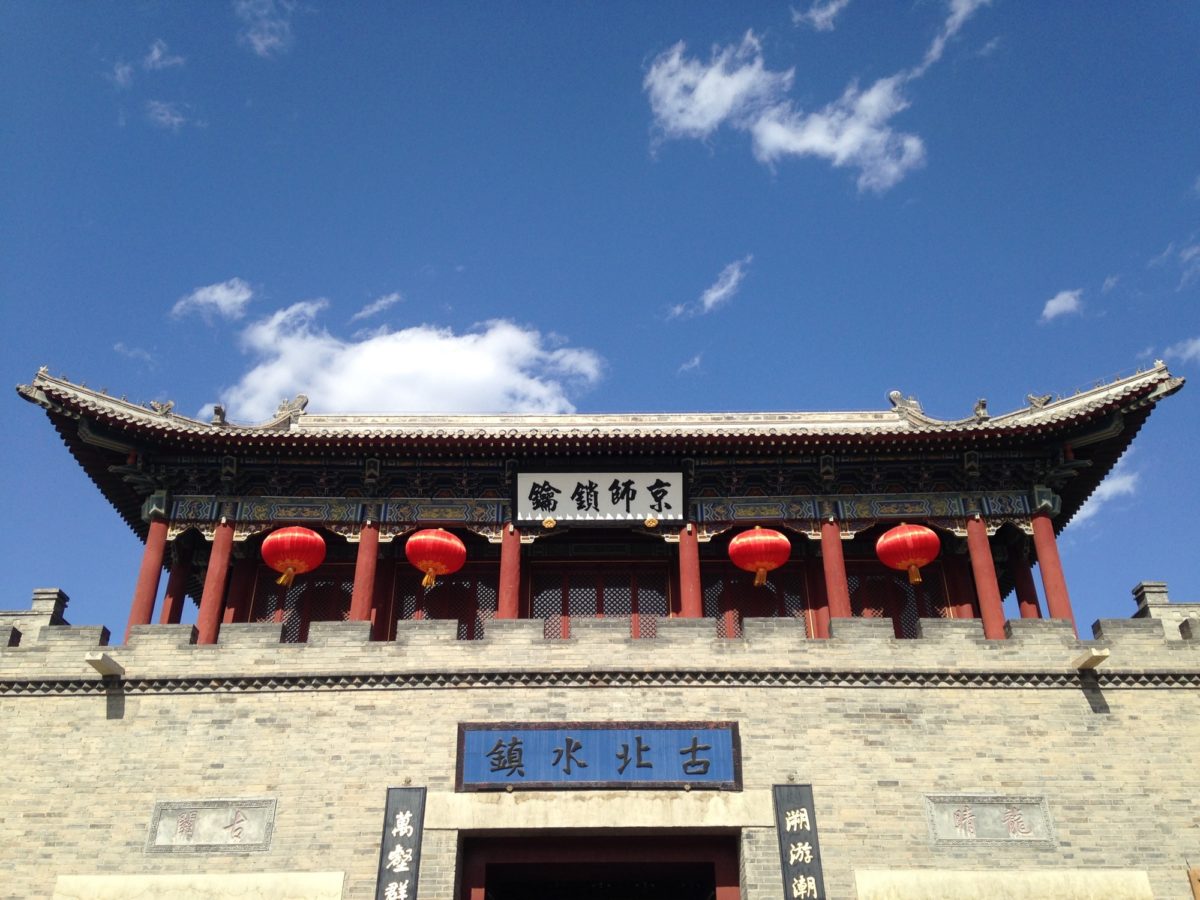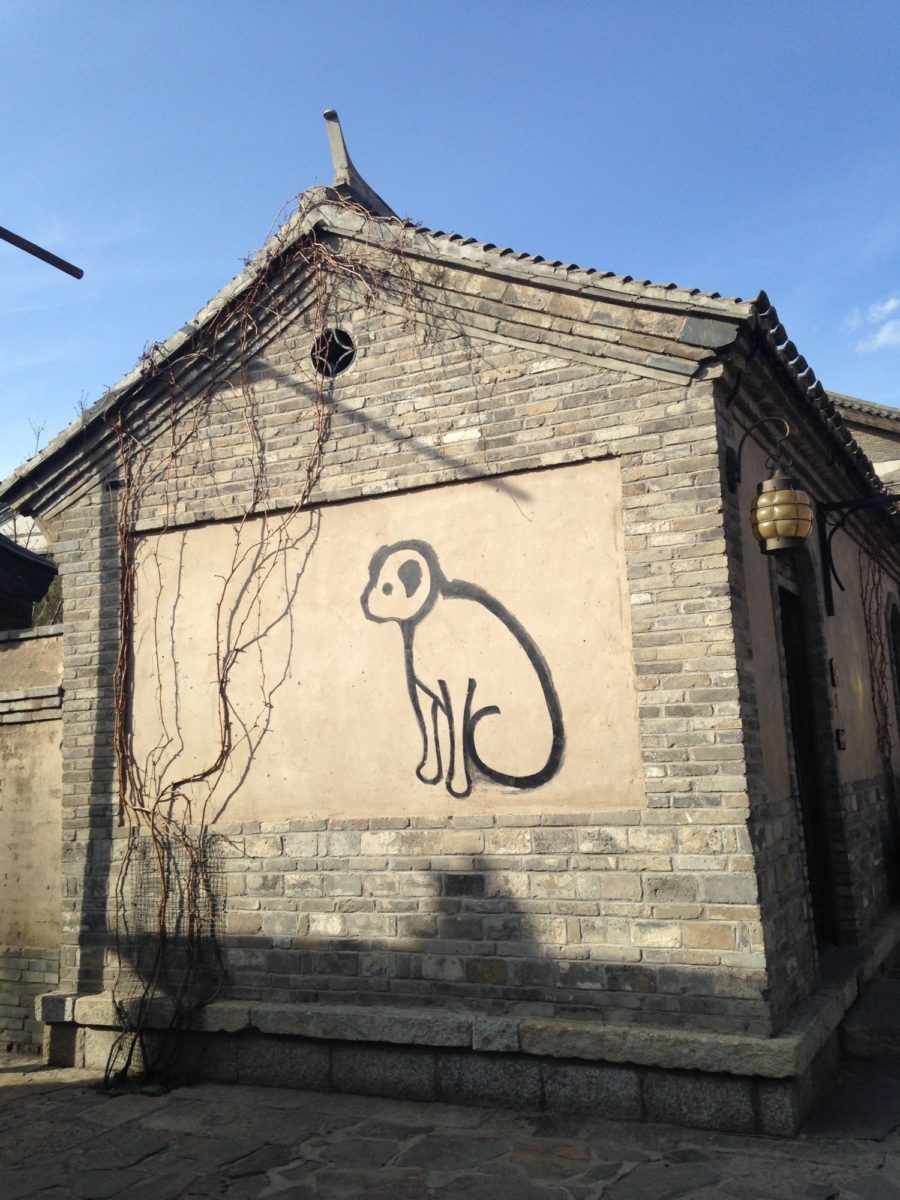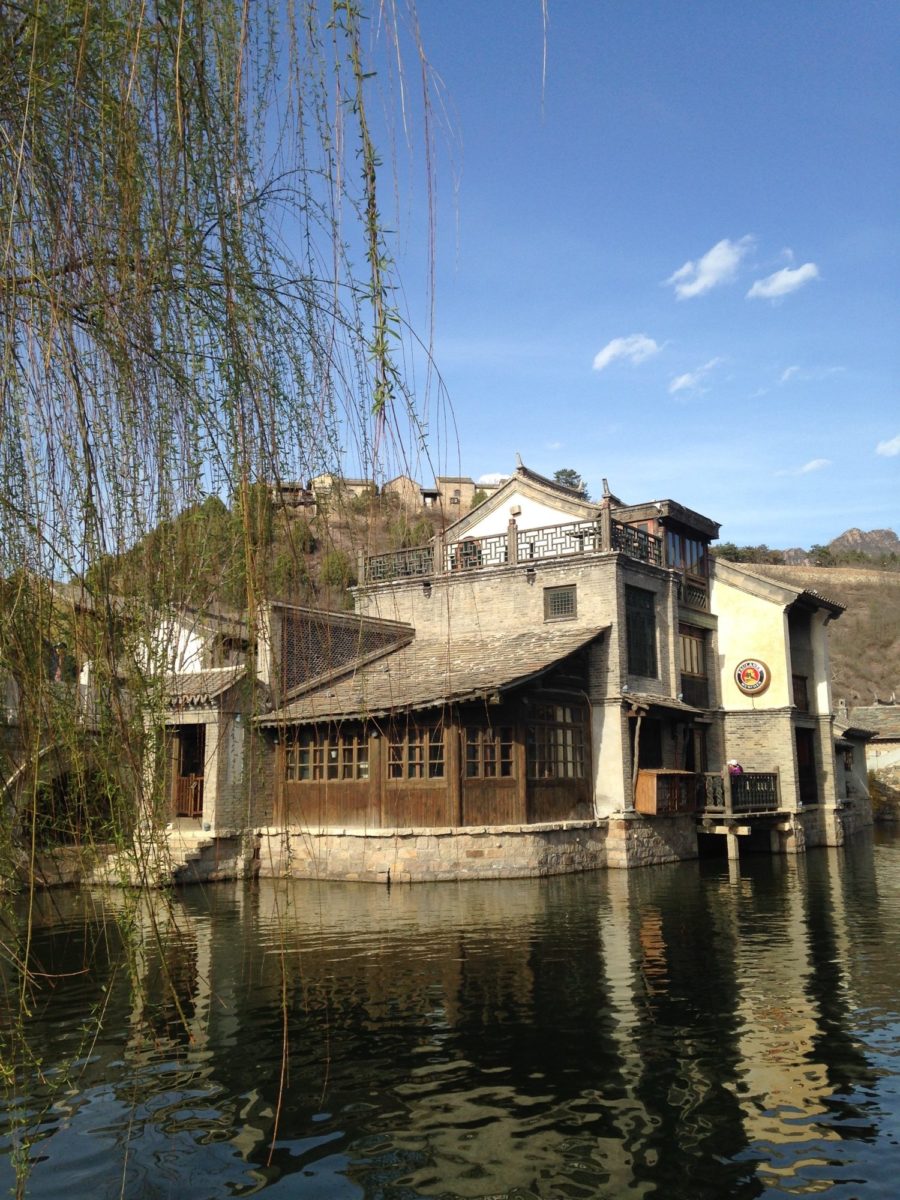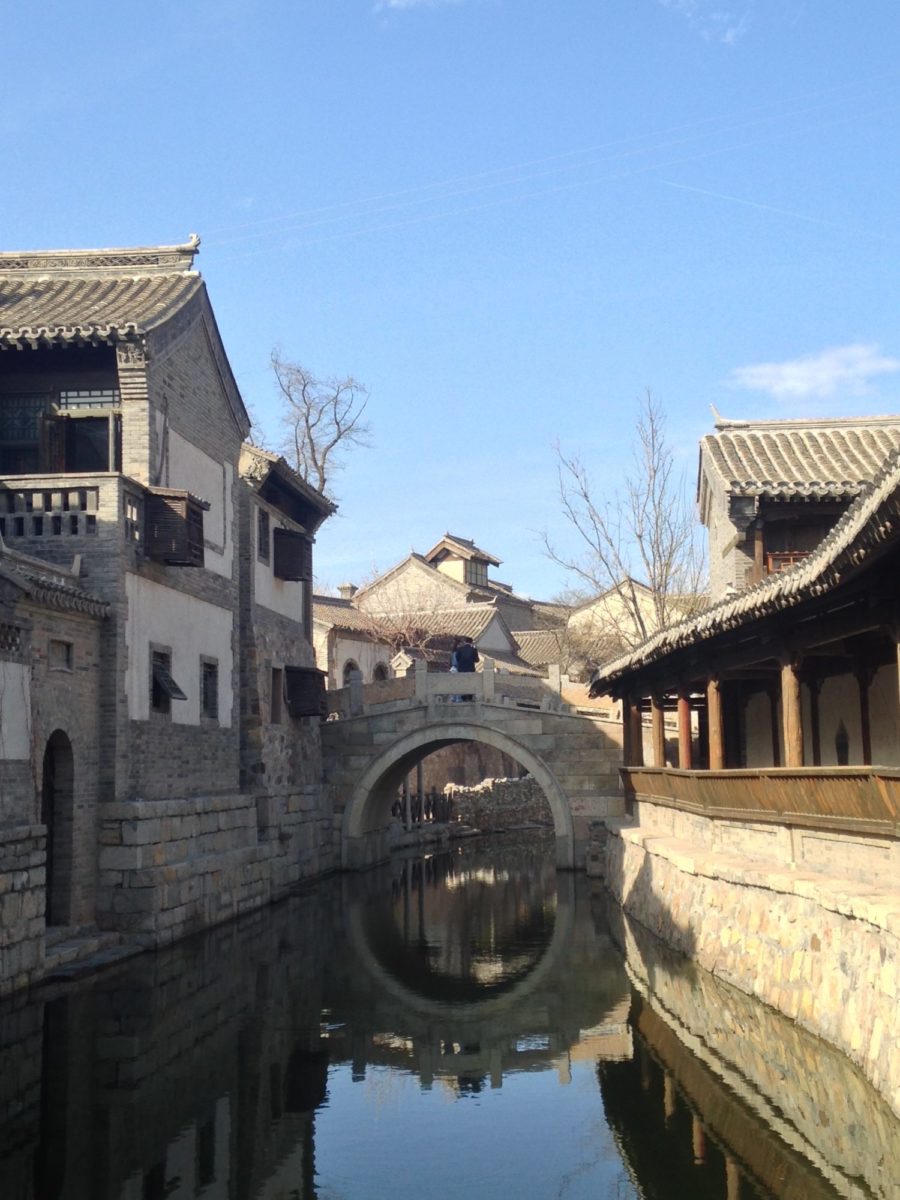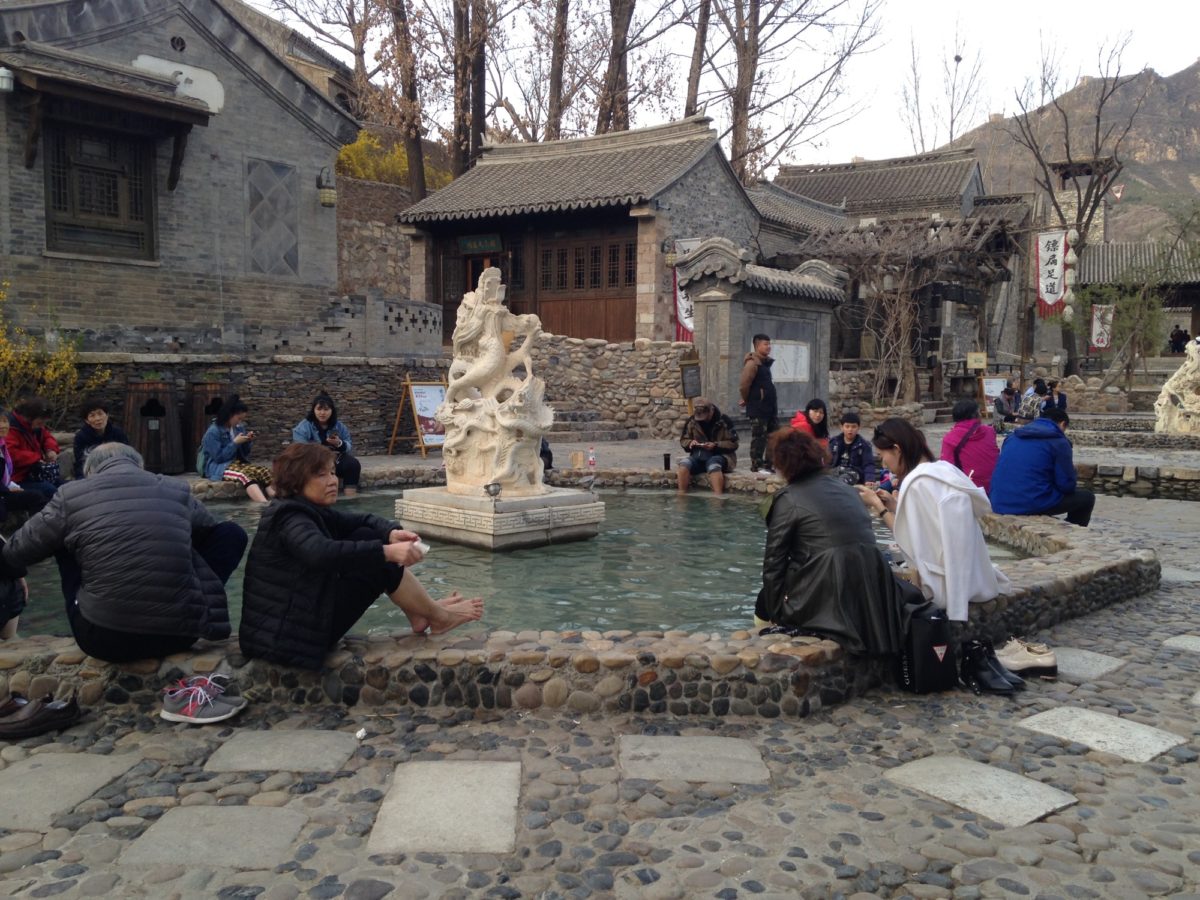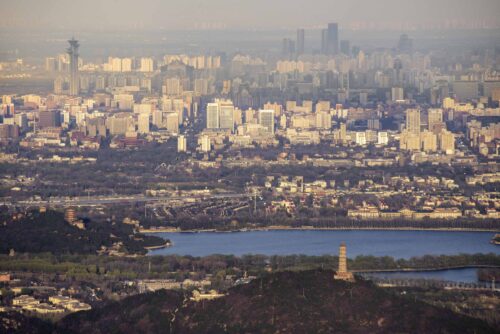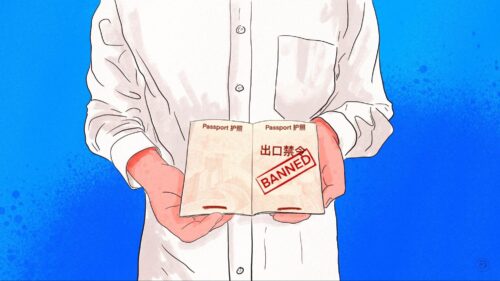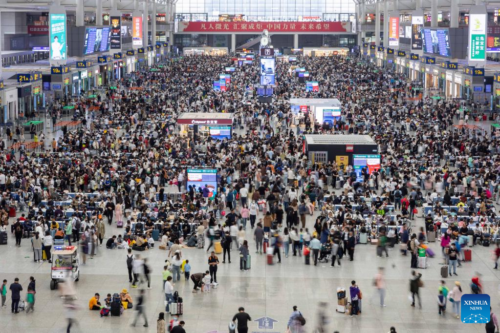Gubei WTown: Beijing’s water town amusement park
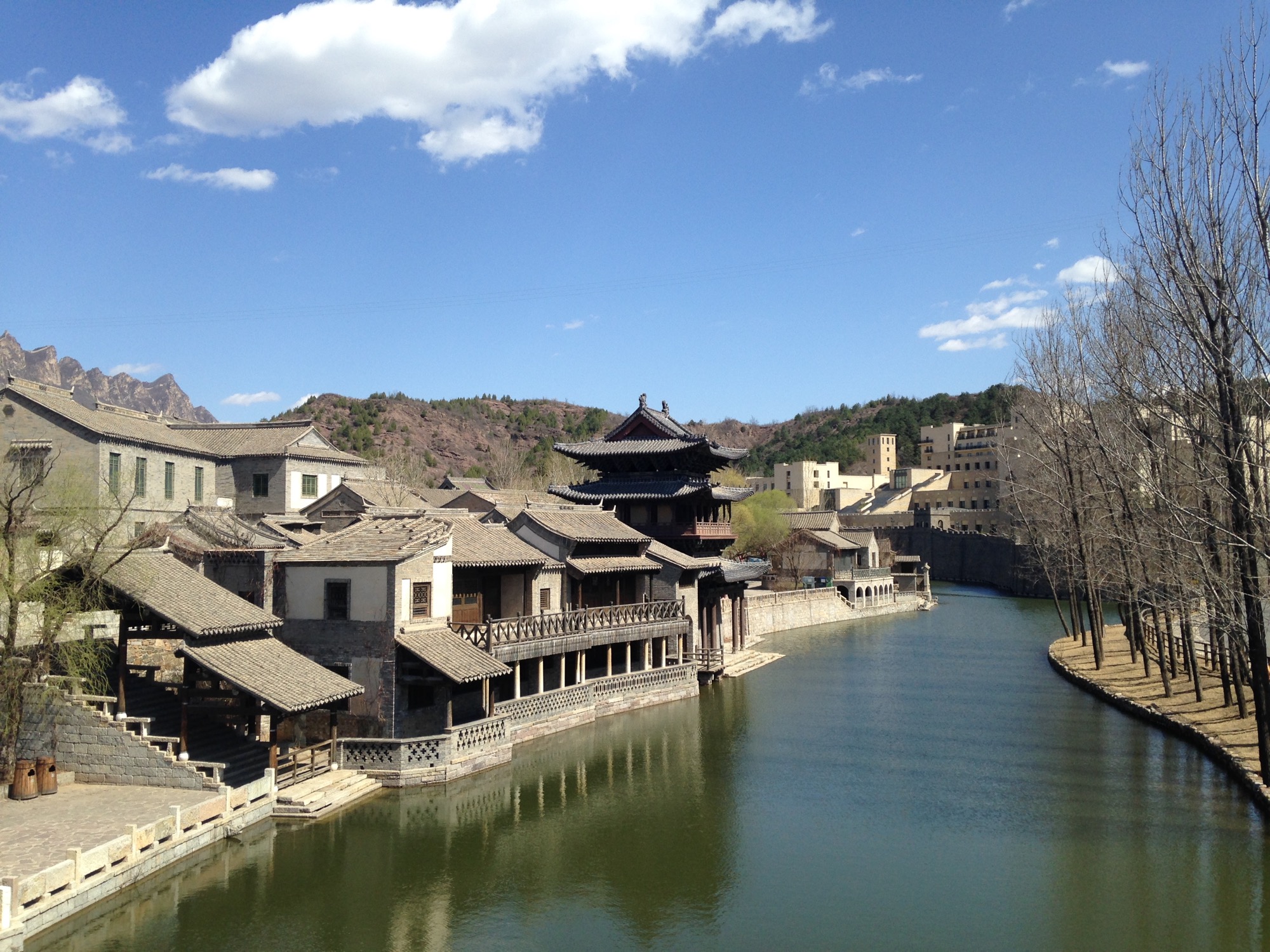
The sun is setting behind the “wild Great Wall” of China, burning red through the haze surrounding an unrestored watchtower which today presides mostly over the clashing, clanging construction of a new high-rise residential development.
These days it’s not Ming Dynasty soldiers but security guards manning the parapets, shooing tourists away from the crumbling edges of the fortifications. A uniformed man watches the sun’s slow progress, whistling. He interrupts his tune to tell off a girl, dressed up like a dynastic princess, who is taking selfies next to a decidedly contemporary lantern while standing perilously close to the wall’s edge. “Go back to the cable car,” he says, “this area is closed for the night.”
Gubei Shuizhen 古北水镇, literally “old northern water village,” offers visitors the chance to inhabit a place that never actually existed. During a time when the Wall was necessary, Gubeikou 古北口, the “old northern mouth,” was a crucial crossing between the Middle Kingdom and all that lay north of it (namely, the lands which would become Mongolia, Russia, and Korea). In a departure from the area’s actual history, what lies at the foot of this “most dangerous and majestic section of the Wall” today is an implausible duplitecture of Wuzhen, a water village in Zhejiang.
The original Wuzhen, a settlement that sprung up out of completely different circumstances, lies more than 900 miles away, and also sports its own Ancient Water Town Scenic Area, “one of the top six ancient towns in the southern region of the Yangtze River,” according to Travel China Guide, which encompasses between one and six thousand years of history, depending on your source.
Back up north, replica Wuzhen, or “Gubei WTown,” as it is officially known in English, was built in cooperation with local Beijing provincial government organizations as well as the tourism ministry from Wuzhen. It feels as if it was built as a vacation destination for those who are living through — to borrow a phrase from the baijiu brand Wuliangye — “a new epoch of prosperity and boom.” Visitors are offered the chance to float on a period-ambiguous skiff down streams that only eight years ago nourished actual farmland, or watch an opera performance in the center of a town square built with the apparent intent of accommodating an entire village of hypothetical residents, should they all decide to take in a show.
Down the hill on food street, visitors can choose between a number of “local specialty food products” that appear to have been culled from the standard set menu of every tourist destination north of the Yellow River. Over wontons I wonder, is WTown itself not definitionally a local specialty by dint of its existence here, consciously constructed in the shadow of the Great Wall?
WTown feels texturally, atmospherically different than other historical sites in and around Beijing, notably for being constructed in 2010 out of architectural materials sourced from sites all over China. The use of these materials contributes to an aesthetic that lends it a real town — as opposed to theme park — feel. Given the lack of similar historical detail at other historic sites (just look up at the stickers peeling off the ceiling of the Forbidden City Museum next time you’re there), it feels unbelievable, unprecedented to walk along the WTown streets paved with old stones.
It feels expensive. Indeed, at 150 RMB ($22) — the price to enter the town — to walk down the street, the monetary barrier might be too steep for some locals. Those who make it in though will find that every corner has something interesting and beautiful crammed into it. It makes me wonder why more historically important places haven’t been reconstructed in a similar style, favoring recycled old materials instead of plastic and plywood. In some ways, it feels less like a theme park than parts of New York City’s shopping playground of SoHo or Shanghai’s kitschy Tianzifang neighborhood. What’s the difference between those real cities and this real theme park?
Make no mistake, it is a theme park: a resort accessible with a ticket, filled with restaurants, shops, hot springs, and reportedly more than 400 hotels, engineered to be a relaxing getaway from the big city. I find myself wondering about the sites where the old materials were sourced from. Where did this peeling doorpost age before this? Why were the structures previously made of these worn bricks no longer standing? What does it mean to make a place which never existed in the first place into a destination vacation?
Is it possible to relax in a historic theme park divorced from history?
On the main street leading into the park, there is a post office which is really a cafe. Turn the corner at the circle bridge and there is a hotel with hundreds of rooms, shaped like a castle, dividing the moat in two. Climb to the top of the hill — where there is a rooftop Catholic church which can be reserved for marriage ceremonies, several Instagram-friendly frames to pose within, and a cafe — and on the way pass a reconstructed martial arts training center and a Buddhist shrine. If you take the cable car to the top of the Wall around sunset, you could linger long enough to catch one of several lightshows projected onto taller buildings from your aerial vantage point.
All roads lead to Rome, and in this case, Rome is a hot spring — all visitors staying at any hotel within the park receive two tickets to this destination, where I’m not sure if it’s a bathing suit situation or a non-bathing suit situation. (It is a bathing suit situation.) Dreamy music floats above pools of not-too-warm spring water. The delicate aroma of chlorine hangs about. There is a bar stocked with a proudly arrayed variety of wine bottles at which the purchase of alcoholic beverages is perplexingly prohibited. However, you can have juice, if that helps you relax in a body of water in which your fellow theme-park-goers are also slowly poaching themselves.
WTown was built in 2010 on the site of several preexisting villages, residents of which were relocated to nearby residential areas. Li, an attendant in the town spa, grew up in nearby Miyun County. She likes working in the spa because it’s close to her home, an answer that many other WTown employees also told me. Every WTown employee I spoke with was from the surrounding area in Miyun, and said they found working in the park preferable to having to move to Beijing for work. They operate the cable cars, hotels, and restaurants. Some put on puppet shows on the hour.
An overwhelming number of visitors to WTown are families and small tour groups. I am possessed by the feeling of being the only solo traveler, floating through tour groups wearing matching bucket hats and around couples staging Instagram photoshoots. I dip my toes in the hot spring in the town square, caught between a mother and daughter sharing Gubei-characteristic poached pears in matching mugs. WTown has to be without a doubt the most Instagrammable city within the Beijing municipality.
Chen, 31, arrived from Tianjin with her husband and toddler son to check into her accommodations around the same time I did. Along with another young couple and their son, Chen and her husband are renting a condo in the “Local Accommodation Area” outside the ticketed area of the park, for a fraction of the cost of staying inside the park overnight. They carry their sons in their arms while their husbands wheel strollers filled with provisions — instant noodles, water, beer. It’s their first trip to the park, but at just 90 minutes by bus from Beijing’s relatively central Dongzhimen station, it’s a much more convenient and affordable trip than heading south to visit the real Wuzhen. On weekends, it’s impossible to book a room inside the park for less than 600 RMB ($88) a night. On Tuesdays, you might get lucky and catch a rare deal for 425 RMB ($62). Condos in the Local Accommodation Area go for less than half of that.
WTown has increased real estate investment in surrounding Miyun County, and the older family members of the young employees of the town live in new apartment buildings with water and electricity, and not on the farms of their parents. Residential towers rise in valleys near the old north mouth, views of the Wall from every floor. Building the fictional water village has led to an actual increase in the value of the surrounding area — a fantasy world leading to real impact, augmenting reality.
You can catch the bus to WTown outside Dongzhimen station. It’s 150 RMB ($22) to enter the park, and another 160 RMB ($23) to ascend to the portion of the Wall accessible through town, which includes three trips on the cable car.
